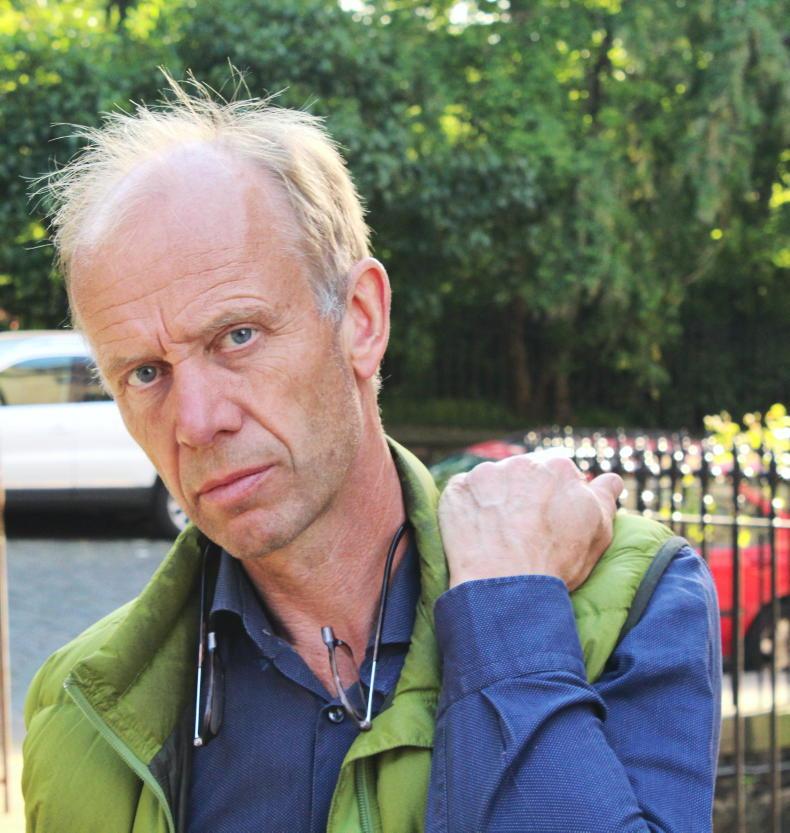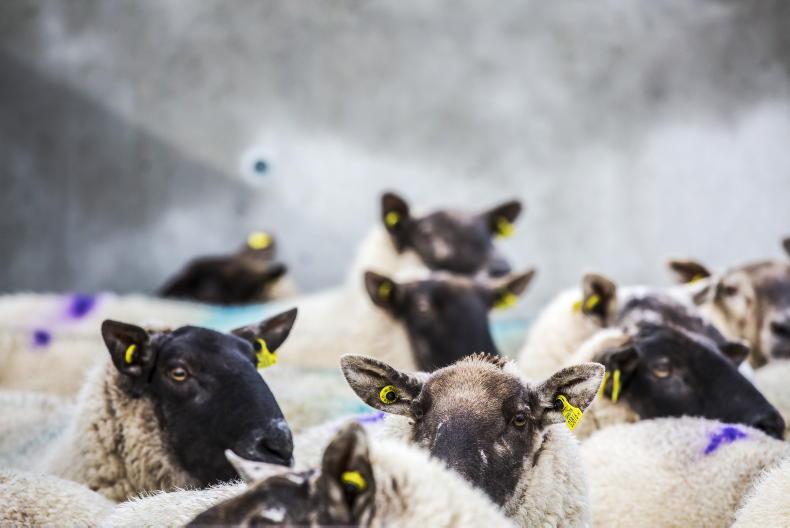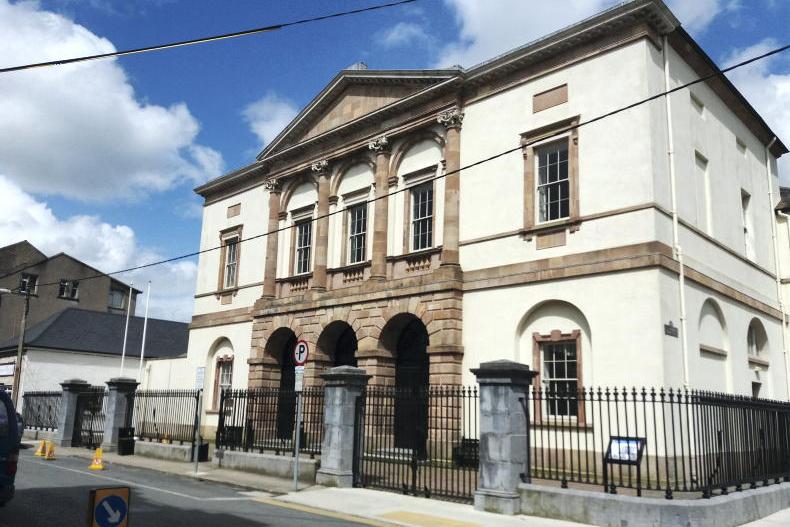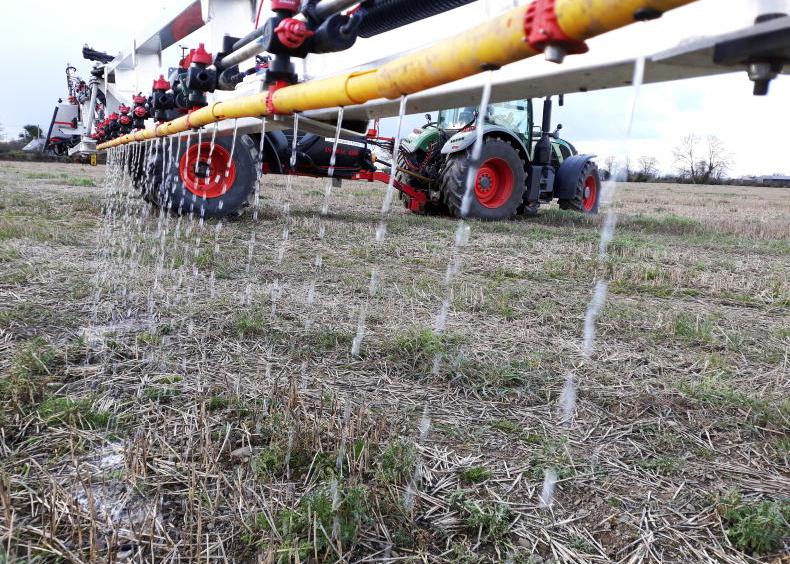I’m a semi-retired psychiatrist and I live near Fethard in Co Tipperary. Born in the middle of five boys, I grew up in Lucan, Co Dublin. We lived on the banks of the River Liffey on a huge dairy farm which belonged to the hospital my dad worked in.
I was basically a feral child! I ran wild on this really lovely farm with its well-hedged fields and dense woodland. As I’ve gotten older, I’ve realised how lucky I was. I want to help provide similar experiences for future generations.
As someone who’s worked in mental health my whole professional life, I’ve always been aware of the benefits of green spaces and getting out into nature.
During lockdown, so many people were out walking and cycling the local lanes in my area. People took a much more leisurely and appreciative look at what’s around them, including their local hedgerows.

Alan Moore of Hedgerows Ireland.
Blank canvas
Sixteen years ago my wife and two daughters and I moved here to a house in a field – a blank canvas. We planted trees and hedges intensively and we are now reaping the rewards. The hedges are now tall and dense and have hawthorn, holly, hazel, spindle, blackthorn, guelder rose, field maple and more. Sparrows, blue tits, blackbirds and wrens abound, and our bird tables are swarming with finches in the winter. We’re surrounded by hedgerows and it’s been very gratifying seeing them develop over the years.
Hedgerow nut
I admit I’ve become a bit of a hedgerow nut! I’ve learned that hedgerows give an incredible list of services, providing a home for a range of plants, birds, insect and animal life along with carbon capture, flood control, shelter, shade and beauty.
The lost traditions of foraging are being rediscovered and hedges yield blackberries, elderberries, hazelnuts and more. Ireland was traditionally forested and centuries ago that, of course, changed radically.
We were left with the remnants of some ancient hedgerows, but the ones you see today were mostly planted in the mid-1700s to mid-1800s.
In a sense they are now the Irish equivalent of the Amazonian rainforests given their contribution to our climate and biodiversity challenges. Because of their interlinking nature and how they act as corridors for wildlife, they need to be connected and well-managed.
I think this is a point that is beginning to get through (at a Government policy level), but maybe not quickly enough.
Wildlife
Two-thirds of our native birds nest or feed in hedgerows, yet two-thirds of these are on the amber or red list for extinction. Of our 800 flowering species of plants, 600 are found in hedgerows.
Wrens, thrushes and long-tailed tits are just some of our hedgerow inhabitants. Owls use them as feeding corridors and a whole range of smaller animals, like hedgehogs field mice and badgers use hedgerows for food and shelter.
Generally speaking, the older hedgerows have a much greater variety of species and as a result they support a wider range of birds, mammals and invertebrates. Experts estimate it takes up to 40 years for a newly planted hedge to equal an old established one for biodiversity.
Best practiCe
Catherine Keena, countryside management specialist in Teagasc, is a great advocate for hedgerows and recommends a triangular-shaped hedge, allowed to grow tall with a wide base and intermittent trees. This style of management is beginning to be adopted and the current fashion for ‘short back and sides’ is being replaced with healthier, bushier and better-looking field margins as a result.
Catherine’s research has shown that most farmers value biodiversity and want to manage their hedges sustainably, but the desire for neatness still overrides in many cases, leading to some quite severe cutting.
Community efforts
As an interesting example of the growing public awareness of nature, a group of concerned neighbours in my area have recently written a letter to the new owner of a nearby farm asking that the hedgerows be retained so that wildlife, including the songbirds who feed at local bird tables, will continue to have a home.
Hedgerows Ireland
I belong to the Hedgerows Ireland group which started in response to Irish Rail’s fencing replacement operations in which many kilometres of mature hedgerows are removed unnecessarily.
We were originally a protest group in response to this, but in the process we learned much about hedgerows including their vulnerability to removal, and how relevant legislation is very weak.
We then became interested in the national picture of hedgerow protection and promotion and have since broadened our work to include all aspects of hedgerows.
Many of our members are farmers so we understand clearly how challenging and threatening the current environment is, hence our interest in proper payments for good practice.
CAP
We are pleased that the latest draft of the CAP proposals have included some mention of hedgerow quality but we are concerned that a huge opportunity is still being overlooked.
We have approximately 700,000km of hedgerow in Ireland that could be contributing massively to our carbon and biodiversity targets if they were managed more sustainably and landowners were properly rewarded for this.
Our group has recommended some changes to both the Pillar I eco schemes and the Pillar II agri environmental climate measures which we believe could potentially yield big dividends to the betterment of all.
Read more
‘It feels like an intangible reward’
‘A lot of people say the dried flowers remind them of their granny’
I’m a semi-retired psychiatrist and I live near Fethard in Co Tipperary. Born in the middle of five boys, I grew up in Lucan, Co Dublin. We lived on the banks of the River Liffey on a huge dairy farm which belonged to the hospital my dad worked in.
I was basically a feral child! I ran wild on this really lovely farm with its well-hedged fields and dense woodland. As I’ve gotten older, I’ve realised how lucky I was. I want to help provide similar experiences for future generations.
As someone who’s worked in mental health my whole professional life, I’ve always been aware of the benefits of green spaces and getting out into nature.
During lockdown, so many people were out walking and cycling the local lanes in my area. People took a much more leisurely and appreciative look at what’s around them, including their local hedgerows.

Alan Moore of Hedgerows Ireland.
Blank canvas
Sixteen years ago my wife and two daughters and I moved here to a house in a field – a blank canvas. We planted trees and hedges intensively and we are now reaping the rewards. The hedges are now tall and dense and have hawthorn, holly, hazel, spindle, blackthorn, guelder rose, field maple and more. Sparrows, blue tits, blackbirds and wrens abound, and our bird tables are swarming with finches in the winter. We’re surrounded by hedgerows and it’s been very gratifying seeing them develop over the years.
Hedgerow nut
I admit I’ve become a bit of a hedgerow nut! I’ve learned that hedgerows give an incredible list of services, providing a home for a range of plants, birds, insect and animal life along with carbon capture, flood control, shelter, shade and beauty.
The lost traditions of foraging are being rediscovered and hedges yield blackberries, elderberries, hazelnuts and more. Ireland was traditionally forested and centuries ago that, of course, changed radically.
We were left with the remnants of some ancient hedgerows, but the ones you see today were mostly planted in the mid-1700s to mid-1800s.
In a sense they are now the Irish equivalent of the Amazonian rainforests given their contribution to our climate and biodiversity challenges. Because of their interlinking nature and how they act as corridors for wildlife, they need to be connected and well-managed.
I think this is a point that is beginning to get through (at a Government policy level), but maybe not quickly enough.
Wildlife
Two-thirds of our native birds nest or feed in hedgerows, yet two-thirds of these are on the amber or red list for extinction. Of our 800 flowering species of plants, 600 are found in hedgerows.
Wrens, thrushes and long-tailed tits are just some of our hedgerow inhabitants. Owls use them as feeding corridors and a whole range of smaller animals, like hedgehogs field mice and badgers use hedgerows for food and shelter.
Generally speaking, the older hedgerows have a much greater variety of species and as a result they support a wider range of birds, mammals and invertebrates. Experts estimate it takes up to 40 years for a newly planted hedge to equal an old established one for biodiversity.
Best practiCe
Catherine Keena, countryside management specialist in Teagasc, is a great advocate for hedgerows and recommends a triangular-shaped hedge, allowed to grow tall with a wide base and intermittent trees. This style of management is beginning to be adopted and the current fashion for ‘short back and sides’ is being replaced with healthier, bushier and better-looking field margins as a result.
Catherine’s research has shown that most farmers value biodiversity and want to manage their hedges sustainably, but the desire for neatness still overrides in many cases, leading to some quite severe cutting.
Community efforts
As an interesting example of the growing public awareness of nature, a group of concerned neighbours in my area have recently written a letter to the new owner of a nearby farm asking that the hedgerows be retained so that wildlife, including the songbirds who feed at local bird tables, will continue to have a home.
Hedgerows Ireland
I belong to the Hedgerows Ireland group which started in response to Irish Rail’s fencing replacement operations in which many kilometres of mature hedgerows are removed unnecessarily.
We were originally a protest group in response to this, but in the process we learned much about hedgerows including their vulnerability to removal, and how relevant legislation is very weak.
We then became interested in the national picture of hedgerow protection and promotion and have since broadened our work to include all aspects of hedgerows.
Many of our members are farmers so we understand clearly how challenging and threatening the current environment is, hence our interest in proper payments for good practice.
CAP
We are pleased that the latest draft of the CAP proposals have included some mention of hedgerow quality but we are concerned that a huge opportunity is still being overlooked.
We have approximately 700,000km of hedgerow in Ireland that could be contributing massively to our carbon and biodiversity targets if they were managed more sustainably and landowners were properly rewarded for this.
Our group has recommended some changes to both the Pillar I eco schemes and the Pillar II agri environmental climate measures which we believe could potentially yield big dividends to the betterment of all.
Read more
‘It feels like an intangible reward’
‘A lot of people say the dried flowers remind them of their granny’










SHARING OPTIONS